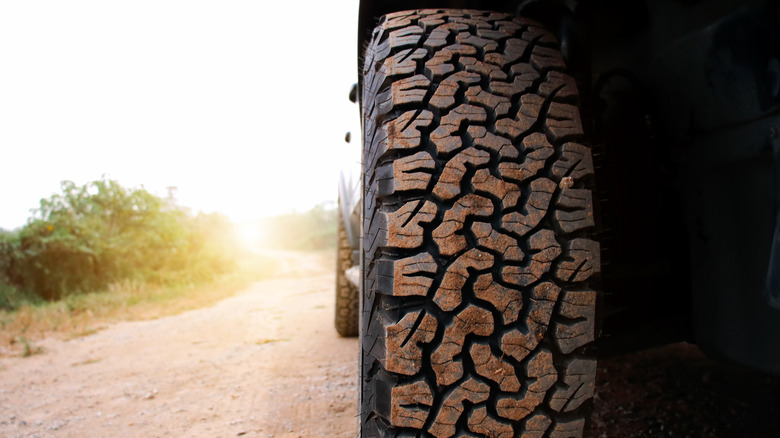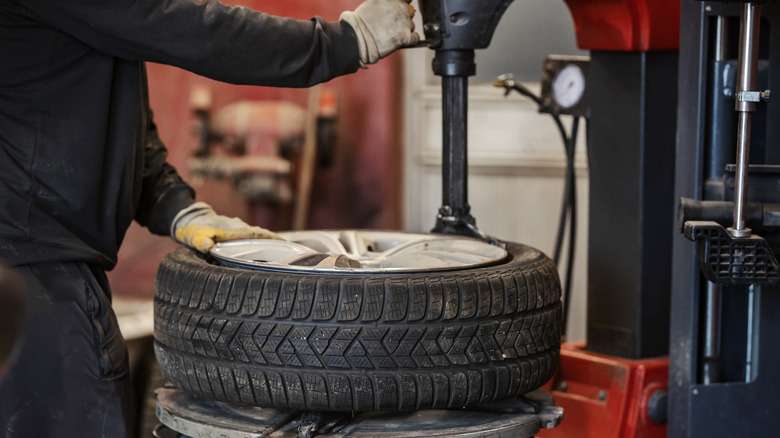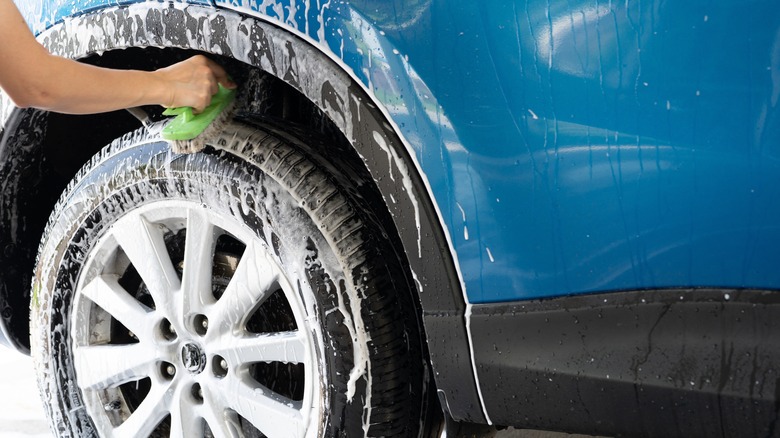If Your Tires Are Turning Brown, This Is Probably Why
Apart from performing the essential functions like holding the automobile steady against the surface and maintaining traction, tires add to the aesthetics of a vehicle. A jet black tire is the cherry on top that can make a vehicle look new or well-maintained. However, tires can quickly turn brown after use and appear worn-out even when they are still fairly new. Tires turn brown through a process called tire blooming. Interestingly, tire blooming isn't a result of dust building over the tire, but rather a result of a spontaneous chemical reaction.
Tires are exposed to the elements in the most brutal form compared to other automobile parts. Hence, tire manufacturers add numerous additives to improve the longevity of the tires (tires show warning signs when worn-out). One such compound is an anti-ozonant — it stops the ozone in the air from reacting with the tire, which can otherwise lead to cracks in the sidewalls. It is this anti-ozonant that causes the tires to turn brown. Let's explore the cause of tire blooming and how you can prevent it.
The cause of tire blooming
Atmospheric ozone in the air is crucial to life on earth, however, it reacts with the carbon chains in untreated tires, causing them to break. To prevent this, tire manufacturers add anti-ozonants to the tire during the production process. The anti-ozonant reaches the surface of the tire through controlled exudation, forming a protective layer against environmental ozone. The ozone reacts with this layer before it can react with the tire, preventing ozone-related tire damage. However, when the anti-ozonants react with oxygen and other environmental elements, they produces a brown residue that sticks to the tire's surface, causing tire blooming.
Contrary to popular belief, mold releases — substances added to easily separate the tire from the mold during manufacturing) — and silicon-based products do not cause tire blooming directly. However, these can cause the anti-ozonants to stick to them, further enhancing the speed of tire blooming. Moreover, silicon-based products are notorious for sticking dust and other substances to the tire, making them look even more worn-out.
How to avoid tire blooming?
The residue buildup is a natural process that will keep turning the tires brown at regular intervals. While there is no way to completely get rid of the residue, regularly scrubbing off the brown layer can restore the aesthetics of the tire while also preventing stubborn blooming that is extremely hard to remove.
To clean your tires to make them appear new, begin with dry cleaning the tires by removing dirt and debris trapped on the surface using a dry towel or brush. Then, rinse the tire with water and apply a water and soap mixture on it. Next, scrub off any brown residue with a soft brush, especially focusing on the sidewalls. Avoid using harsh brushes, as they can damage the tire's surface, causing even more frequent blooming. Rinse the tire again with water, and finally, dry the tire with a towel to check for any remaining residue. You may repeat the process multiple times in case of stubborn residue. You may also apply a layer of tire shine to make the tire look glossy and new.


